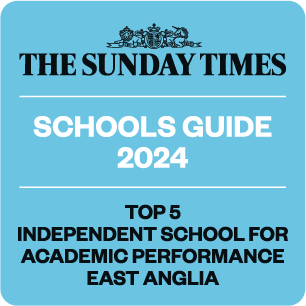As the Easter holidays began, most members of the school community were enjoying a relaxing Sunday with no thought of school the next day. But as the clock struck midnight an intrepid band of students from Year 10 to 12 gathered on the Newmarket Road to travel to Berlin.
As we sat at Gatwick nursing coffees wondering how anyone eats Wagamamas at 4.30am in the morning, we readied ourselves for the visit ahead. Landing in Berlin we enjoyed a very scenic bus tour to the hostel with a driver who appeared to be on his first visit to the city. From now on it would be public transport and it was good to see there was an S-Bahn station next to the hostel to this effect.
The first day involved a river boat tour where many, some staff included, succumbed to the warmth and gentle rocking of the River Spree. To awaken ourselves we headed to the Kurfürstendamm, Berlin’s primary shopping district. Not before stopping at the Kaiser Wilhelm Church, a bomb damaged structure which has been carefully preserved in its damaged state to keep the beautiful mosaics inside whilst a highly original new church has been erected to the side. The new Church is bathed in blue light through many stained glass windows and contains an arresting exhibition on the current conflict in Ukraine. This was followed by some time for shopping and, if you were efficient, a chance to head to KaDeWe, the historic, premier apartment store in Berlin. This preceded the first of several visits to the hub of Ostberlin the Alexanderplatz and dinner at a traditional German restaurant. There was no problem getting the students to go to sleep on the first night.


